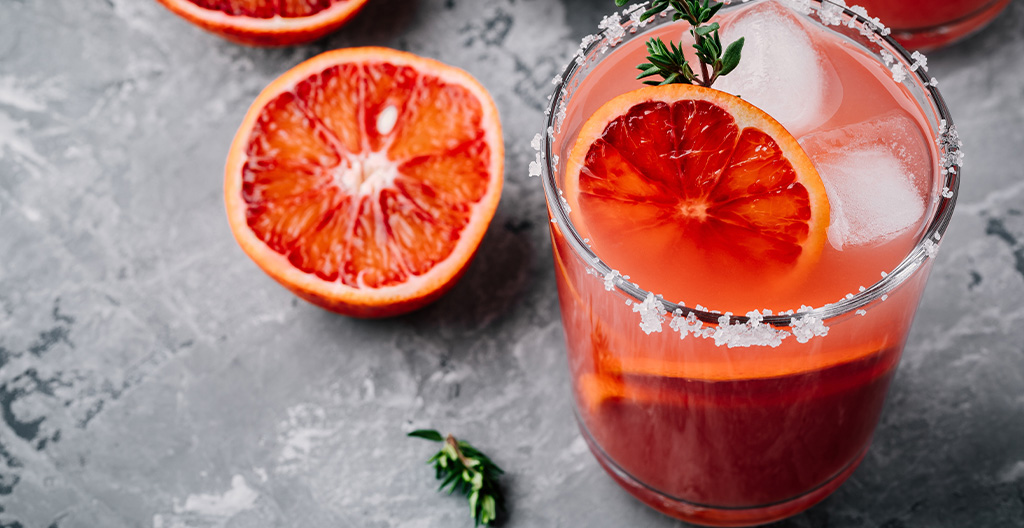Cocktail garnishes can be divisive. Arguments over when and how to garnish often reaches a fever pitch among bartenders and drinkers.
The fervor may seem disproportionate to how small a part of the drink garnishes constitute. But a bit of fruit or twist of lemon can add a final flourish, something that sets the aromas and flavors apart and elevates base ingredients, or act as a symbol of excess, ego and obnoxious bartender peacocking.
The official stance of Bartender Basics is that all garnishes should be functional. That means they must have a concrete impact on the drink’s flavor, aroma or texture. This can be referred to as a “service element.” Below, we break down three styles of garnish and the purpose behind each.
Garnish that gives guests a say
The same way condiments customize a meal, a garnish is a bartender’s main tool to give the guest input on the taste of their drink.
The most common examples are the ubiquitous lime/lemon wedges placed on the rim of most drinks. Far from pointless tradition, their purpose is to give the drinker the ability to regulate the level of acidity and sourness of the drink to taste, rather than being left completely to the bartender’s whims. If you prefer your daiquiri on the sweeter side, discard the lime on the rim. If you favor a tart, sour drink, it’s within your power to decide how much extra juice you’d like to squeeze in.
(This is also why wedges are always preferable to wheels when it comes to lemon or lime garnish. Always).
Olives, cocktail onions, cherries, berries, and other “snackable” garnishes also fall in this service camp. They allow drinkers to refresh and reawaken their palates by alternating sips with different flavors that are still tailored to accentuate the cocktail’s profile. This helps prevent flavor numbness, where the effect of alcohol and sipping the same drink over the span of 10 or 15 minutes can make the second half of the cocktail taste muted.

Garnish that focuses on aroma
So, why bother with garnish rather than mixing flavors into the drink directly? If a standard martini is garnished with a lemon twist, couldn’t we just skip the peel and mix in a few drops of lemon juice with the rest of the ingredients when stirring?
The difference is often aroma. When you twist a lemon peel over the top of a cocktail, you express its essential oils, which the float on top of the drink. In short, you’re adding an ingredient that’s perceived primarily on the nose, rather than in the mouth. This opens a new dimension of combinations that allows you to experiment with the interplay between what a person smells versus what they taste.
A good example is the classic Jungle Bird. This rum and apritivo cocktail is garnished with a large bouquet of mint, but unlike a mojito contains no mint inside the drink. The garnish’s purpose is to ensure that when you bring the glass to your mouth to sip, you’re inhaling mint as the other ingredients hit your tongue. This opens up the nasal passages and creates a refreshing, tropical vibe in the back of the mouth. If the mint were mixed directly into the drink, it would combine with the aperitivo's bitterness to create an undesirable, Robitussin-like flavor on the tongue.
This interplay of smell and taste is something that should be familiar to wine lovers. Garnishing for aroma is basically a bartender’s tool to create the same experience in a cocktail that winemakers create in a glass.
Garnish for show
Those who argue in favor of garnish purely for show often cite the adage that we drink with our eyes before we drink with our mouths. Throw a little extra flair into a non-functional garnish and you’ll shape a person’s opinion of how the drink will taste before they even get around to sipping it. Garnishes that usually fall under this umbrella are flower petals, pineapple leaves and, well, actual tiny umbrellas.
It’s up to you how much you’re willing to invest in non-functional garnish. Overwrought garnishes can be an exercise in vanity, and contribute little more than food waste.
However, for bar professionals, a little bit of showmanship can help set the scene and generate tips. An edible flower may create justification for a $12 “bespoke” drink that only contains $2.50 worth of ingredients. But our opinion, especially for home bartenders, is that most people prefer a drink that focuses on flavor, and one they can sip without risk of poking an eye out.
The exception to this rule is the Bloody Mary, which we maintain is functionally a soup, and therefore fair game for anything you want to shove in it.

